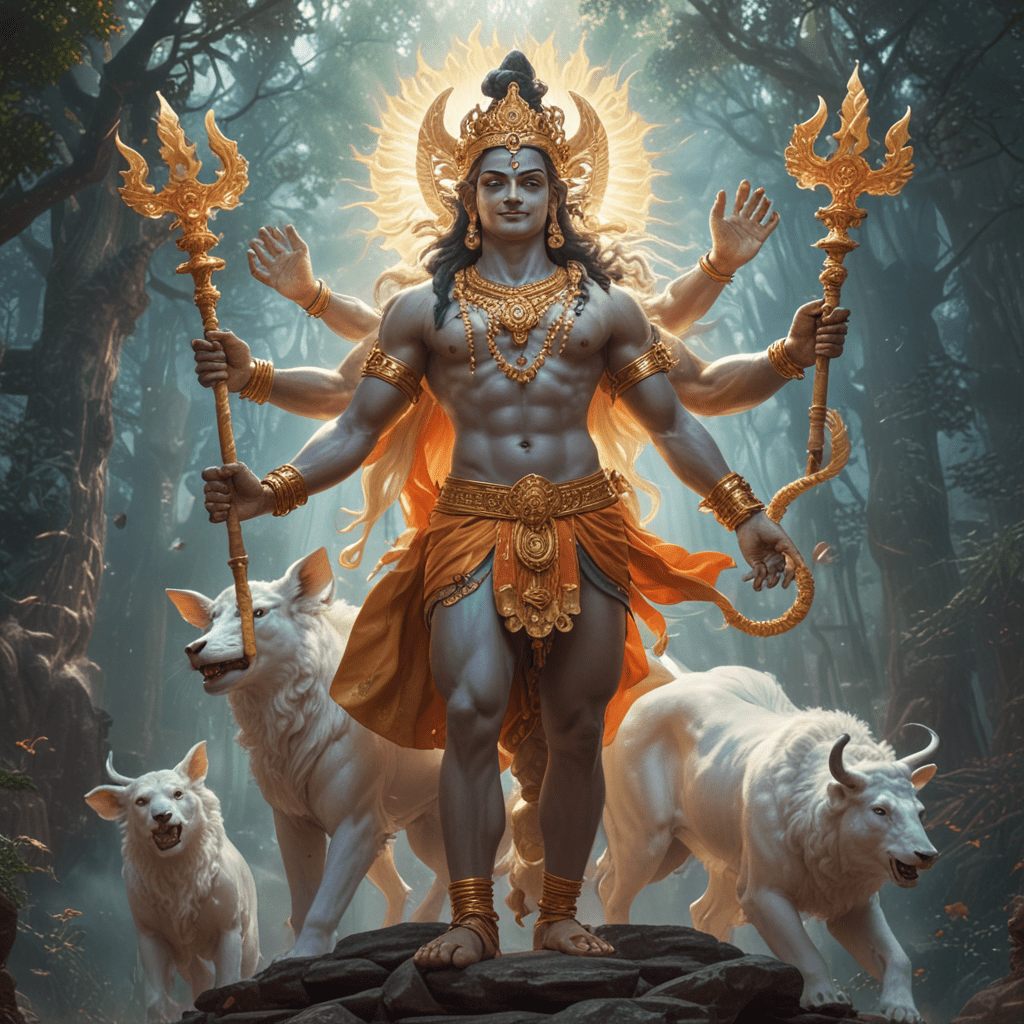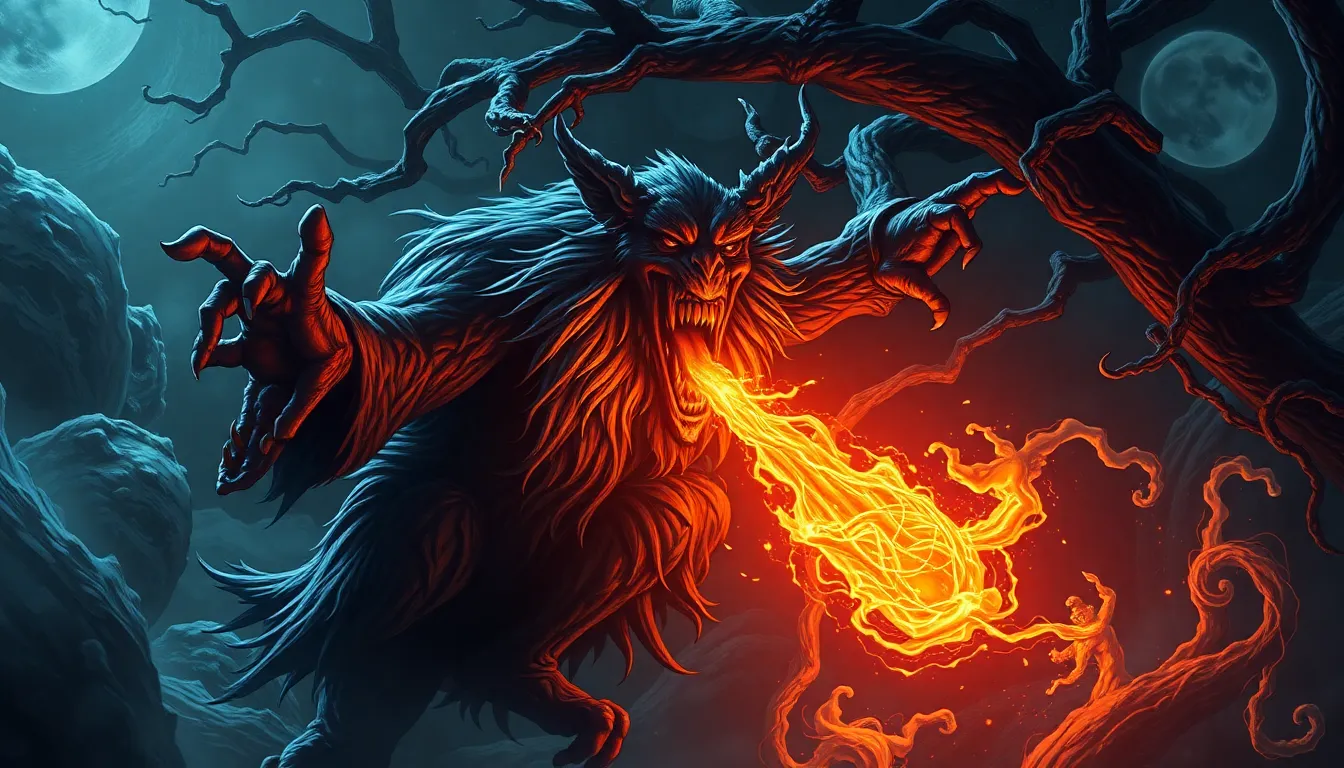I. The Mythical Origins of Dattatreya
In the tapestry of Hindu mythology, Dattatreya stands as a enigmatic and revered figure, revered as an avatar embodying the supreme Trinity of Brahma, Vishnu, and Shiva. The origins of his existence are shrouded in ancient legends, each adding to the rich tapestry of his illustrious tale. One prominent narrative traces Dattatreya's genesis to Anasuya, the virtuous wife of Rishi Atri. Through her unyielding devotion and austerity, Anasuya gained the favor of the Trinity, who descended to Earth to test her resolve. Impressed by her unwavering piety, they granted her a boon and promised to be born as her sons. Thus, from Anasuya's divine womb emerged the Trimurti Avatar known as Dattatreya.
II. The Convergence of the Trinity: Brahma, Vishnu, Shiva
The convergence of Brahma, Vishnu, and Shiva in the form of Dattatreya symbolizes the unity of the three supreme deities, representing the cosmic principles of creation, preservation, and destruction. Dattatreya is often depicted with three heads, six arms, and carrying the symbols of each deity: the kamandalu (water pot) of Brahma, the chakra (discus) of Vishnu, and the trishul (trident) of Shiva. This unique iconography underscores the harmonious amalgamation of the divine powers, reflecting the fundamental unity underlying the diverse manifestations of the cosmos.
III. The Birth and Childhood of Dattatreya
The birth of Dattatreya was marked by miraculous events and extraordinary circumstances. Anasuya, the mother of the divine child, possessed an otherworldly glow and radiance that illuminated the surroundings. As Dattatreya came into the world, the planets aligned in auspicious configurations, heralding the arrival of a great sage and teacher. Throughout his childhood, Dattatreya displayed exceptional wisdom and spiritual enlightenment, astonishing those around him with his profound insights and effortless mastery of yogic practices. His precocious nature and extraordinary abilities hinted at his divine lineage and destined path as a revered spiritual guide.
IV. Dattatreya's Ascetic Journey and Enlightenment
Embracing the path of asceticism, Dattatreya embarked on a rigorous spiritual journey, seeking enlightenment through meditation, austerities, and self-realization. He wandered through forests and secluded mountains, immersed in contemplation and communion with nature. Along his path, Dattatreya encountered numerous obstacles and challenges, each serving as a crucible that tested his resolve and deepened his understanding. Through unwavering dedication and a relentless pursuit of knowledge, Dattatreya attained the highest realms of spiritual enlightenment, becoming an enlightened sage renowned for his wisdom and profound teachings.
V. The Teachings of Dattatreya: The Avadhuta Gita
Dattatreya's teachings, known as the Avadhuta Gita, are a collection of profound spiritual wisdom imparted to his disciples and seekers. The text expounds on the nature of the self, the illusory nature of the world, and the path to spiritual liberation. Dattatreya emphasized the importance of detachment, non-attachment, and the renunciation of worldly desires as essential steps towards realizing the true nature of existence. His teachings resonate with those seeking self-realization and spiritual enlightenment, inspiring countless devotees over the centuries.
VI. The Symbols and Iconography of Dattatreya
Dattatreya's iconography and symbolism are rich and multi-layered, reflecting the diverse aspects of his divine nature. He is often depicted seated on a tiger or four dogs, representing his mastery over the senses and the animalistic instincts. The three heads represent the Trinity, while the six arms symbolize his omnipotence and cosmic powers. The kamandalu contains the nectar of immortality, representing his role as a divine physician and healer. The chakra signifies his power to cut through illusion, and the trishul symbolizes his ability to destroy negative forces and liberate souls from ignorance.
VII. Dattatreya in Hindu Literature and Tradition
The myth of Dattatreya is prevalent throughout Hindu literature and tradition. He is mentioned in several sacred texts, including the Mahabharata, the Ramayana, and the Puranas. In the Bhagavata Purana, Dattatreya is described as the supreme sage who taught Sanatkumara, the four Kumaras, and other enlightened beings. His teachings are revered by numerous Hindu sects and lineages, and he is considered a patron deity of various monastic orders.
VIII. The Worship of Dattatreya: Rituals and Festivals
Dattatreya is widely worshipped in India and beyond, with numerous temples and shrines dedicated to him. Devotees observe specific rituals and festivals to honor him. The Dattatreya Jayanti festival, celebrated on the full moon day in the Hindu month of Margashirsha, commemorates his birth and is marked by special prayers, pujas, and offerings. Other rituals associated with Dattatreya include the recitation of his mantras, meditation on his form, and the performance of austerities.
IX. The Significance of Dattatreya in Modern Hinduism
In modern Hinduism, Dattatreya continues to be revered as a symbol of spiritual enlightenment and wisdom. His teachings on detachment, non-attachment, and the search for inner truth resonate deeply with seekers on the path of self-realization. Dattatreya's emphasis on living in harmony with nature and respecting all forms of life has made him a popular figure among environmentalists and conservationists.
X. The Legacy and Impact of the Myth of Dattatreya
The myth of Dattatreya has had a profound impact on Hindu culture and spirituality. His teachings have inspired generations of seekers and guided countless souls towards self-realization. He is considered an exemplary figure of renunciation, compassion, and wisdom, embodying the highest ideals of the Hindu faith. The myth of Dattatreya continues to be a source of inspiration and guidance, reminding us of the transformative power of self-knowledge and the unity that underlies all existence.
FAQ
Q: Who is Dattatreya?
A: Dattatreya is an enigmatic and revered figure in Hindu mythology, uniting the supreme Trinity of Brahma, Vishnu, and Shiva as a single avatar.
Q: What are Dattatreya's symbols and iconography?
A: Dattatreya is often depicted with three heads, six arms, and carrying the symbols of Brahma, Vishnu, and Shiva: the kamandalu, chakra, and trishul. He is also associated with a tiger and four dogs, representing his mastery over the senses and animalistic instincts.
Q: What are Dattatreya's teachings?
A: Dattatreya's teachings, known as the Avadhuta Gita, emphasize detachment, non-attachment, the search for inner truth, and living in harmony with nature.
Q: How is Dattatreya worshipped?
A: Dattatreya is widely worshipped in India with numerous temples and shrines dedicated to him. Devotees observe specific rituals and festivals, including the Dattatreya Jayanti festival, to honor him.
Q: What is Dattatreya's significance in modern Hinduism?
A: Dattatreya remains a revered figure in modern Hinduism, symbolizing spiritual enlightenment and wisdom. His teachings resonate with seekers on the path of self-realization, and he is considered an exemplary figure of renunciation, compassion, and wisdom.



